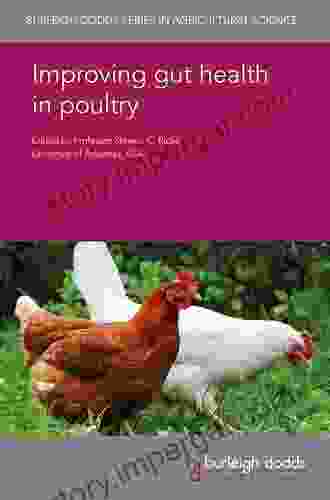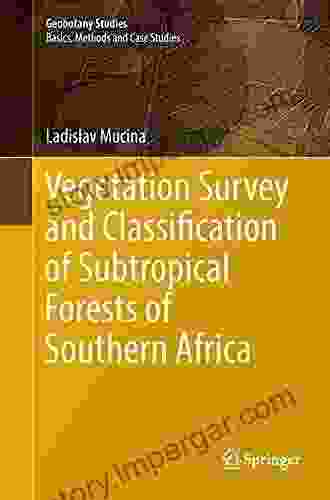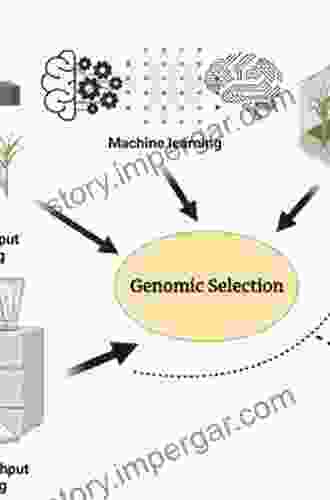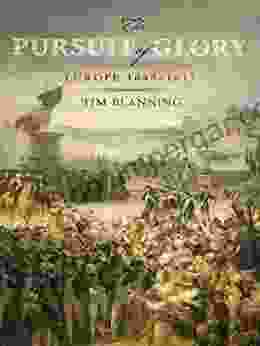Genetics, Genomics and Breeding of Sugarcane: Unlocking the Secrets of a Sweet Success

Sugarcane, a towering grass with a sugary stalk, has been a staple ingredient in our diets for centuries. Its cultivation has played a vital role in shaping civilizations, economies, and even global trade routes. However, the challenges of meeting the growing demand for sugar, coupled with climate change and disease outbreaks, have necessitated a renewed focus on enhancing sugarcane productivity and sustainability. This is where the field of sugarcane genetics, genomics, and breeding comes into play.
Chapter 1: The Genetics of Sugarcane
The genetic makeup of sugarcane is complex, with a large genome size and multiple copies of each chromosome. Understanding the intricate interplay of genes and their functions is crucial for improving sugarcane traits. This chapter explores the basic principles of sugarcane genetics, including inheritance patterns, gene mapping, and the role of genetic diversity.
4 out of 5
| Language | : | English |
| File size | : | 8199 KB |
| Print length | : | 300 pages |
| Screen Reader | : | Supported |
1.1. Polyploidy and Aneuploidy: Unique Features of Sugarcane
Sugarcane is often polyploid, meaning it has more than two sets of chromosomes. This complexity can lead to aneuploidy, where individual plants have an abnormal number of chromosomes. Polyploidy and aneuploidy have significant implications for sugarcane breeding and can influence traits such as yield, disease resistance, and sucrose content.
1.2. DNA Markers: Uncovering the Genetic Code
DNA markers are short, unique DNA sequences that serve as genetic landmarks. They are invaluable tools for identifying and tracking specific genes or genomic regions associated with desirable traits. This chapter delves into the types of DNA markers used in sugarcane research, including single nucleotide polymorphisms (SNPs),simple sequence repeats (SSRs),and insertion-deletion polymorphisms (InDels).
1.3. Genetic Mapping: Connecting Traits to Genes
Genetic mapping is the process of determining the location of genes on chromosomes. By analyzing the inheritance of DNA markers linked to specific traits, researchers can construct genetic maps. These maps provide a framework for identifying genes responsible for traits of interest and guide breeding efforts.
Chapter 2: Genomics: Deciphering the Sugarcane Genome
The advent of high-throughput sequencing technologies has revolutionized our understanding of sugarcane genetics. Genomics is the study of the entire genome, including genes, regulatory elements, and non-coding DNA. This chapter explores the latest advances in sugarcane genomics and highlights the potential applications of genomic information.
2.1. The Sugarcane Genome Project: Unlocking the Blueprint
The Sugarcane Genome Project, completed in 2013, was a major milestone in sugarcane research. It provided the first comprehensive sequence of the sugarcane genome, revealing the presence of over 38,000 genes. This data has opened new avenues for studying gene function, identifying novel traits, and developing genomic tools.
2.2. Transcriptomics: Uncovering Gene Expression Patterns
Transcriptomics involves analyzing the set of RNA molecules (transcripts) produced by genes. By studying the transcriptome, researchers can identify genes that are active in specific tissues, developmental stages, or under different environmental conditions. This information provides insights into the molecular mechanisms underlying sugarcane growth and development.
2.3. Proteomics: Exploring Protein Functions
Proteomics is the study of proteins, the workhorses of the cell. By identifying and characterizing proteins, researchers can gain a deeper understanding of cellular processes and their regulation. Proteomics has applications in identifying stress-responsive proteins, enzymes involved in sucrose metabolism, and potential targets for genetic engineering.
Chapter 3: Breeding: Harnessing Genetic Variation
Breeding is the art and science of manipulating the genetic makeup of organisms to improve desirable traits. This chapter focuses on conventional breeding techniques, as well as cutting-edge molecular breeding approaches used in sugarcane.
3.1. Conventional Breeding: A Foundation for Progress
Conventional breeding has been the mainstay of sugarcane improvement for centuries. It involves selecting and crossing individuals with desirable traits and evaluating their progeny to select the most promising lines. This chapter covers the principles of selection, hybridization, and genetic recombination in sugarcane breeding.
3.2. Molecular Breeding: Precision Tools for Trait Improvement
Molecular breeding utilizes genomic information to accelerate and enhance the breeding process. Techniques such as marker-assisted selection (MAS) and genomic selection (GS) allow breeders to identify and select individuals with specific genetic variants associated with desirable traits. This approach reduces the time and resources required for breeding, leading to faster genetic gains.
3.3. Genetic Engineering: Expanding the Possibilities
Genetic engineering involves modifying the genetic material of an organism to introduce or alter specific traits. This technology has the potential to address challenges such as disease resistance, drought tolerance, and enhanced sucrose yield. This chapter explores the applications and ethical considerations of genetic engineering in sugarcane.
Chapter 4: Future Directions and
The field of sugarcane genetics, genomics, and breeding is poised for continued growth and innovation. This chapter discusses emerging trends and future directions, including the use of big data, artificial intelligence, and precision agriculture. It also highlights the importance of sustainable sugarcane production and the role of genetics in addressing environmental concerns.
4.1. Big Data and Artificial Intelligence: Empowering Geneticists
Big data and artificial intelligence (AI) are rapidly transforming sugarcane research. Advanced statistical techniques and machine learning algorithms can analyze vast genomic datasets, identifying complex genetic interactions and predicting breeding outcomes. This will enable more efficient and targeted breeding efforts.
4.2. Precision Agriculture: Tailoring Practices to Field Conditions
Precision agriculture aims to optimize crop management based on real-time field data. Advanced sensors and data analytics can provide insights into soil conditions, water availability, and plant health. By integrating genetic information with precision agriculture practices, farmers can improve crop performance and sustainability.
4.3. Sustainable Sugarcane: Balancing Productivity with the Environment
Sugarcane cultivation has potential environmental impacts. This chapter emphasizes the role of genetics in developing sugarcane varieties that are resistant to pests and diseases, tolerant to drought and salinity, and have reduced environmental footprints. Sustainable sugarcane production is crucial for ensuring the long-term viability of the industry and its impact on ecosystems.
Genetics, genomics, and breeding play a pivotal role in enhancing sugarcane productivity and sustainability. By unraveling the genetic secrets of sugarcane, researchers and breeders can develop improved varieties that meet the growing demand for sugar while addressing environmental challenges. The continued advancements in this field hold the promise of a sweeter and more sustainable future for sugarcane cultivation worldwide.
4 out of 5
| Language | : | English |
| File size | : | 8199 KB |
| Print length | : | 300 pages |
| Screen Reader | : | Supported |
Do you want to contribute by writing guest posts on this blog?
Please contact us and send us a resume of previous articles that you have written.
 Book
Book Novel
Novel Page
Page Chapter
Chapter Text
Text Story
Story Genre
Genre Reader
Reader Library
Library Paperback
Paperback E-book
E-book Magazine
Magazine Newspaper
Newspaper Paragraph
Paragraph Sentence
Sentence Bookmark
Bookmark Shelf
Shelf Glossary
Glossary Bibliography
Bibliography Foreword
Foreword Preface
Preface Synopsis
Synopsis Annotation
Annotation Footnote
Footnote Manuscript
Manuscript Scroll
Scroll Codex
Codex Tome
Tome Bestseller
Bestseller Classics
Classics Library card
Library card Narrative
Narrative Biography
Biography Autobiography
Autobiography Memoir
Memoir Reference
Reference Encyclopedia
Encyclopedia Peter Ingman
Peter Ingman Matthew Inman
Matthew Inman Maria Rosa Antognazza
Maria Rosa Antognazza Maria Youtman
Maria Youtman Margaret J Brown
Margaret J Brown Ricky D Phillips
Ricky D Phillips Michael H Hoffheimer
Michael H Hoffheimer Maureen Peters
Maureen Peters Matthew S Demoss
Matthew S Demoss Washington Gladden
Washington Gladden Science Kids University
Science Kids University Christopher Waldrep
Christopher Waldrep Robert J Henry
Robert J Henry Mark Lamb
Mark Lamb May Darwich
May Darwich The Law Store
The Law Store Tony Kushner
Tony Kushner Mark Barber
Mark Barber Mark Maslin
Mark Maslin Mark Pieth
Mark Pieth
Light bulbAdvertise smarter! Our strategic ad space ensures maximum exposure. Reserve your spot today!

 Ervin BellUnlocking the Secrets of Human Evolution: A Comprehensive Summary of "Who We...
Ervin BellUnlocking the Secrets of Human Evolution: A Comprehensive Summary of "Who We...
 Cody BlairDressing Well In Medicine: The Ultimate Guide to Enhancing Your Professional...
Cody BlairDressing Well In Medicine: The Ultimate Guide to Enhancing Your Professional... Eric NelsonFollow ·12.3k
Eric NelsonFollow ·12.3k Darren BlairFollow ·6.4k
Darren BlairFollow ·6.4k Anthony WellsFollow ·19.2k
Anthony WellsFollow ·19.2k Nathaniel PowellFollow ·18.1k
Nathaniel PowellFollow ·18.1k Jamal BlairFollow ·7.1k
Jamal BlairFollow ·7.1k Adrien BlairFollow ·11.4k
Adrien BlairFollow ·11.4k Jack LondonFollow ·12.3k
Jack LondonFollow ·12.3k James JoyceFollow ·15.2k
James JoyceFollow ·15.2k

 Roberto Bolaño
Roberto BolañoUnveiling the Beauty and History of the Medici Iris: A...
In the realm of...

 Theodore Mitchell
Theodore MitchellImproving Gut Health in Poultry: Unlocking the Path to...
In the ever-evolving field of...

 Victor Hugo
Victor HugoPersonalized Medicine with a Nanochemistry Twist:...
The future of healthcare...

 George Martin
George MartinA Year Of Wine: Perfect Pairings Great Buys And What To...
## Year of Wine: An Epic Journey Through the...

 Tom Hayes
Tom HayesDelve into the Enigmatic World of Southern Africa's...
Embark on a captivating journey through the...
4 out of 5
| Language | : | English |
| File size | : | 8199 KB |
| Print length | : | 300 pages |
| Screen Reader | : | Supported |










